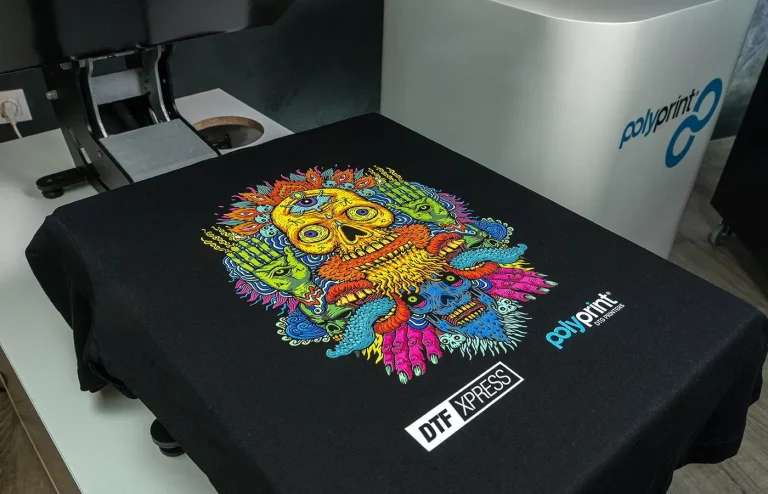UV DTF Printing: A Sustainable Choice for the Environment
UV DTF printing, or Ultraviolet Direct-to-Film printing, is revolutionizing the way we approach textile and graphic design. As industries increasingly turn towards sustainable printing methods to reduce their ecological impact, this innovative technology emerges as a frontrunner due to its efficiency and lower environmental footprint. Unlike traditional printing techniques that often rely on harmful solvent-based inks, UV DTF printing utilizes eco-friendly inks that are cured with UV light, making it a greener choice. The benefits of UV printing extend beyond environmental concerns, offering vibrant colors and durable prints that meet the demands of modern consumers. In this introductory exploration, we will delve into the environmental impact of UV DTF printing, highlighting its role in promoting sustainable practices within the printing industry.
Also known as Ultraviolet Direct-to-Film printing, this advanced printing technique is gaining traction for its eco-friendly attributes and commitment to sustainability. This method utilizes UV-cured inks to produce high-quality graphics without relying on the toxic chemicals often present in conventional printing processes. By embracing eco-conscious practices and reducing material waste, this printing technology aligns well with the growing consumer demand for sustainable options in fashion and design. As the industry grapples with the environmental impact of printing, alternative methods like UV DTF present a promising path toward reducing carbon footprints and fostering a circular economy. In this article, we will further dissect the implications of adopting UV DTF technology and its significance in paving the way for a greener future.
The Basics of UV DTF Printing
UV Direct to Film (DTF) printing represents a significant leap forward in printing technology, uniquely designed to meet modern-day demands for high-quality, sustainable production. This innovative process utilizes ultraviolet light to cure specially formulated inks onto film, producing vibrant and durable prints that are ideal for a variety of substrates, from textiles to hard surfaces. The efficient curing process ensures that the inks bond strongly, resulting in minimal fading and enhanced longevity of the print, making UV DTF a preferred choice in the competitive market.
As more businesses seek to integrate eco-friendly practices into their production methods, understanding the intricacies of UV DTF printing becomes critical. This technology not only streamlines the printing workflow but also supports companies’ sustainability goals. By using water-based inks and reducing material waste—common pitfalls in traditional printing methods—UV DTF printing stands out as a pathway toward responsible manufacturing in an industry striving to lessen its environmental impact.
Sustainable Benefits of UV DTF Printing
One of the most significant benefits of UV DTF printing is its substantially lower environmental impact compared to conventional methods. Traditional printing techniques frequently involve the use of solvent-based inks, which emit volatile organic compounds (VOCs) harmful to both health and the environment. In stark contrast, UV DTF utilizes eco-friendly, water-based inks that significantly reduce harmful emissions, helping to maintain better air quality both in the workplace and the larger community.
Additionally, the UV DTF process minimizes material waste by allowing precise prints directly onto films, reducing the excess ink and misprint waste that often characterizes traditional methods. By streamlining operations and enhancing efficiency, UV DTF printing aligns with broader sustainability goals that many brands are now adopting, thus appealing to eco-conscious consumers who prioritize environmental responsibility in their purchasing decisions.
The Role of UV DTF in a Circular Economy
The concept of a circular economy, focused on reusing materials and minimizing waste, is more relevant than ever. UV DTF printing technologies are evolving to support this model through innovations that allow certain films to be repurposed. As educational resources improve and more businesses recognize the value of sustainable practices, the adoption of UV DTF printing is contributing to a larger shift towards circularity within the textile and printing industries.
Furthermore, the integration of UV DTF printing into the circular economy paradigm not only fosters environmental sustainability but also drives economic benefits for businesses. With advancements in recycling processes, companies can potentially recoup some of their input costs while simultaneously strengthening their brand image as environmentally conscious leaders. This exemplary cycle of reuse, coupled with the benefits of UV DTF technology, demonstrates the potential for sustainable growth in the printing sector.
Consumer Demand for Eco-Friendly Printing
The current market reflects a notable shift in consumer preferences towards sustainably produced goods. As awareness of environmental issues rises, customers are increasingly seeking products that align with their values. Companies harnessing the advantages of UV DTF printing are not only meeting this demand but also gaining a competitive edge in a crowded marketplace. By adopting eco-friendly printing techniques, brands resonate with the modern consumer’s desire for transparency and sustainability in product sourcing and manufacturing.
Moreover, the impact of consumer choices on production practices is significant, with many opting to support businesses that implement green initiatives. Brands that can highlight their eco-friendly commitments, such as the use of UV DTF printing, are likely to see enhanced customer loyalty and increased sales. By aligning product offerings with sustainability, companies can effectively strengthen their market position while appealing to an environmentally aware consumer base.
Challenges in Implementing UV DTF Technology
While UV DTF printing has remarkable advantages, it does face certain challenges that need addressing for broader adoption. One primary concern is the energy consumption associated with the curing process of UV inks. The high energy input required for instant curing raises sustainability questions, especially for businesses striving to lower their carbon footprints. Therefore, ongoing research is crucial in developing energy-efficient curing methods that can alleviate these concerns, ultimately enhancing the overall sustainability of UV DTF printing practices.
Additionally, the initial investment required for UV DTF printing technology can be a barrier for some companies. The costs associated with acquiring modern equipment and materials may deter businesses from transitioning from traditional methods. However, by weighing these upfront costs against the long-term sustainability benefits and potential savings from reduced waste and increased efficiency, many businesses recognize that the switch to UV DTF can yield considerable returns, both environmentally and financially.
The Future of UV DTF Printing and Sustainability
Looking ahead, the future of UV DTF printing appears promising, particularly as global awareness of sustainability issues continues to escalate. With increasing pressure on businesses to adopt greener practices, the role of UV DTF printing as an eco-friendly alternative is likely to become more prominent. Ongoing advancements in technology will undoubtedly enhance the efficiency and sustainability of this printing method, making it a preferred choice for future applications.
Furthermore, industry collaborations and initiatives aimed at improving the eco-friendliness of printing practices will drive further innovation. As key players in the textile and printing industries unite to promote sustainable technologies such as UV DTF printing, we can expect to see exciting developments that minimize environmental impact while maximizing production value. Ultimately, as society prioritizes sustainability, UV DTF printing stands poised to be at the forefront of this transformative movement in the printing landscape.
Frequently Asked Questions
What are the key benefits of UV DTF printing in sustainable printing?
UV DTF printing offers several significant benefits in the realm of sustainable printing. It utilizes water-based inks, which dramatically reduce harmful emissions compared to solvent-based inks used in traditional printing. This leads to a lower environmental footprint as it minimizes air pollution and toxic chemical usage. Additionally, UV DTF printing reduces material waste and promotes efficient production processes, further supporting eco-friendly printing techniques.
How does UV DTF printing impact the environment compared to traditional printing methods?
The environmental impact of UV DTF printing is considerably less than that of traditional printing methods. Traditional practices often release volatile organic compounds (VOCs) and other pollutants, while UV DTF printing primarily uses water-based inks that emit fewer harmful substances. This shift not only helps improve air quality but also helps reduce the overall carbon footprint associated with printing, making it a more sustainable choice.
Can UV DTF printing contribute to a circular economy?
Yes, UV DTF printing can significantly contribute to a circular economy. By leveraging advancements in recycling technologies, some UV DTF printed films can be repurposed, reducing waste and encouraging material reuse. This approach aligns with sustainable practices that emphasize longevity and resource conservation within the printing and textile industries.
What challenges does UV DTF printing face in sustainable printing practices?
While UV DTF printing has many benefits, it also faces challenges, particularly regarding energy consumption during the curing process. This requirement can lead to higher energy use compared to other eco-friendly printing techniques. However, ongoing research is focused on developing more energy-efficient solutions to enhance the sustainability of UV DTF printing.
How does UV DTF printing support eco-conscious consumer preferences?
UV DTF printing aligns with eco-conscious consumer preferences by providing a sustainable alternative to traditional printing methods. As more consumers prioritize environmentally-friendly products, companies that utilize UV DTF printing can attract customers who value sustainability. This technology not only meets rising consumer demands but also enhances brand reputation by showcasing a commitment to sustainable practices.
Is UV DTF printing a more cost-effective choice for sustainable printing in the long run?
While the initial investment costs for UV DTF printing equipment can be higher than traditional printing methods, the long-term cost-effectiveness lies in its efficiency and waste reduction capabilities. Businesses can achieve significant savings through lower material waste and reduced needs for chemical solvents, making UV DTF printing a smart investment for sustainable printing in the long run.
| Key Point | Details |
|---|---|
| Definition of UV DTF Printing | Application of UV-cured inks onto a film for transfer onto various substrates ensuring vibrant colors and durability. |
| Environmental Advantages | Utilization of water-based inks which significantly reduce VOC emissions compared to traditional solvent-based methods. |
| Reduced Toxic Chemicals | Minimizes the use of harmful solvents, lowering health risks and environmental degradation. |
| Material Waste Reduction | Direct printing onto films minimizes surplus ink waste and misprints, streamlining production. |
| Contributions to Circular Economy | Potential for film material reuse due to advancements in recycling technologies, promoting sustainability. |
| Lifecycle Assessment Results | Overall lifecycle impact studies show a favorable comparison with traditional methods, despite higher energy use initially. |
| Market Trends | Growing demand for sustainably produced goods enhances the competitive advantage for businesses using UV DTF. |
| Challenges | Energy consumption during the curing process and initial investment costs are challenges that need to be addressed. |
Summary
UV DTF printing is an innovative and sustainable choice for the textile and printing industries, boasting a variety of environmental benefits. By utilizing water-based inks and significantly reducing harmful emissions associated with traditional printing methods, UV DTF printing minimizes its ecological footprint. With the potential to streamline production and reduce waste, this technology exemplifies a commitment to sustainability, attracting eco-conscious consumers and creating new market opportunities. Although energy consumption and initial costs are challenges, advancements in technology hold promise for further improvements in energy efficiency. Ultimately, as the push towards sustainability intensifies, UV DTF printing is poised to play a pivotal role in shaping a more environmentally friendly future.







